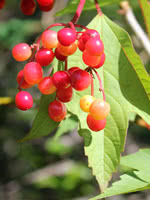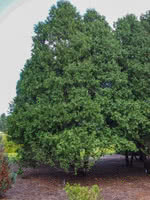Mon-Fri 9am - 5pm Mountain time
Highbush Cranberry vs Eastern White Cedar (Arborvitae)
Viburnum opulus var. americanum (trilobum)
Thuja occidentalis
Highbush Cranberry produces attractive white flowers in late June and bears edible fruit that matures to a bright red colour in the late summer.
This shrub, native to much of Canada, is fast growing, and its fruit can be eaten raw or cooked into a sauce.
Eastern White Cedar is a slender growing conifer often used as a decorative tree or a hedge. This tree is an effective privacy screen even in winter and a great long term solution to urban crowding or a drab yard.
Highbush Cranberry Quick Facts
Eastern White Cedar (Arborvitae) Quick Facts
In row spacing: 0.6 m (2.0 ft)

